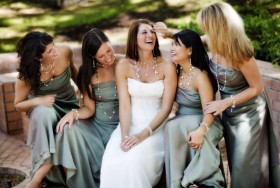The Romans thought diamonds were splinters from falling stars, while the Greeks regarded the sparkling gems as tears of the gods. It is a derivation of the Greek word “adamas,” meaning unconquerable, that gave the diamond its name.
The diamond claimed its place as the primary token of love toward the end of the 15th century, when Austrian Archduke Maximilian gave the first diamond engagement ring to his betrothed. It was placed on the fourth finger of her left hand, because that finger was to believed to course with the vein of love that passed directly to the heart. Five centuries later, the diamond remains one of the most luxurious and desirable gifts for any romantic and celebratory occasion, a gem whose purity and brilliance symbolizes lasting love.
WHAT MAKES A DIAMOND SPECIAL?
BEAUTY – The colorless beauty and inner fire of the diamond has made this precious gem prized for centuries. Each stone’s complex characteristics cannot be duplicated, and no two diamonds can ever be the same. Each stone, like its owner, is endowed with a personality and character uniquely its own.
PURITY – Although new resources for diamonds are being explored and discovered, the supply of these gems remains limited. This is understandable once you learn that more than 250 tons of ore need to be blasted, crushed and processed to yield just one carat of rough diamond. Further, only 20 percent of all rough diamonds are suitable for gem cutting.
ENDURING VALUE – Like many precious products, diamond prices fluctuate. But it is important to know that these sparkling gemstones still value after years of being worn and enjoyed.
HOW TO BUY A DIAMOND….
There are four factors that determine the value so a diamond, collectively know as the four “C’s”. The combination of the four C’s determines each diamond’s value. Master these important facts, and you will be prepared to make your purchase.
CARAT – This word for the measurement of a diamond’s weight is derived from the word carob seeds that were used to balance scales in ancient times. A carat is equal to 200 milligrams, and there are 142 carats to an ounce. Carats are further divided into points There are 100 points in a carat.
COLOR – Diamonds come in every color of the spectrum, but the most popular gem are colorless. Icy-White diamonds are extremely rare.
G.I.A. Grade of Colors:
Colorless: D – E- F
Near colorless: G – H – I -J
Diamonds also come in a spectrum of majestic colors, from red and canary yellow to blue, green and brown. These colorful diamonds, known as fancies, are valued for their depth of color, just as white diamonds are valued for their lack of color.
CLARITY – Fl, or Flawless, is the grade given to a stone that has no visible internal or external flaws. These are extremely rare and priced accordingly.
IF, or Internally Flawless, is the grade given to a stone with no internal flaws and only minor external blemishes that could be removed with polishing. Also very rare.
VVS1 and VVS2 grades are given to stones with internal flaws that are very, very difficult for a trained observer to see.
VS1 and VS2 graded stones have very small inclusions that are difficult for a trained observer to see.
SI1 and SI2 graded stones have flaws that are fairly easy for a trained observer to see.
I1, I2 and I3 are imperfect grades and flaws are obvious to the naked eye of a trained observer.
A diamond’s clarity is affected by any external irregularities and internal imperfections created by nature when the diamond was formed. Imperfections such as spots, bubbles or lines are called inclusions. Although these marks make each stone unique, the fewer the inclusions, the more valuable the stone.
CUT – Each diamond is cut according to an exact mathematical formula. The most common cut, the round brilliant, has 58 facets, or small, flat, polished planes designed to yield the maximum amount of light to be reflected back to the viewer. This reflection, know as brilliance, is extremely important factor in evaluating the quality of a diamond. a poorly cut diamond will actually lose light and appear dull. The widest circumference of a diamonds known as the girdle Above the girdle of a brilliant cut diamond are 32 facets plus the table, the largest and topmost facet. Below the girdle are 24 facets plus the culet, or point. Cut is also used to describe the shape of a diamond. In addition to the round brilliant, other popular cuts include emerald, marquis, pear, oval and square.














Stay in Touch